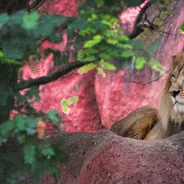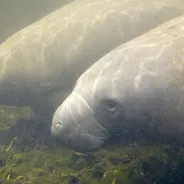It’s a story as old as the hills. A mining town reliant on an industry in decline, there was mass outward migration. With no people there can be no town and before long, the small community had been reclaimed by nature. However, Houtong has bounced back in the most remarkable way.
In 2008, when the rest of the world was falling into financial turmoil, Houtong was offered a lifeline. There were a handful of residents in the Northern Taiwanese town. However, there were hundreds of stray cats.
Around this time, photographer and cat enthusiast Jian Peiling noticed this unusual phenomenon and started a blog about the cats. Consequently, a volunteer group was set up to feed and care for them. More and more people came to visit Houtong to pet the cats and wander around the town. The same year, a museum dedicated to the town’s history opened its doors.

Motorists entering the town were now met with a sign reading “A lot of stray cats here. Drive slowly”. The cats were given nicknames and a map showed where the hotspots were for finding your favourite feline. Cat-themed cafes popped up. Soon, people started moving back.
The government invested in the area, building a pedestrian bridge shaped like a cat. Metal plates adorned with paws were embedded into the streets. By now, Peiling was writing books about the town and had shifted her focus to “cat photography” under the pseudonym “Mrs Kitten”.

In 2012, perhaps noticing that they should jump on the trend, the museum hosted a cat lantern festival. In 2013, the pedestrian bridge won the recognition of the Public Construction Golden Quality Award.
A cat information and education centre - featuring elevated cat walkways on the exterior of the building - opened in 2014. Now, the town draws in an estimated one million visitors per year, which makes it one of the country's most-visited attractions. However, Houtong’s unique, and somewhat accidental, marketing strategy has not been without its detractors.

According to local media, the town has become something of a dumping ground for unwanted pets - an unfortunate phenomenon which appears to be backed up by reports on TripAdvisor.
The New Taipei City Government Animal Protection and Health Inspection Office estimated that the village is now home to about 286 cats following a recent survey (50 more than were two years ago).

The government is now fining anyone caught dumping strays in Houtong 150,000 New Taiwan dollars ($5,120). However, there are also concerns around the cats’ health, with an outbreak in 2014 claiming the lives of many felines. This was thought to have been introduced by a newcomer, possibly from a family who had dumped it.
"There are people who adopt cats without thinking seriously about it, and abandon them as soon as they don't want them anymore," Zhan Biyun, a local resident who has adopted two of the strays, told Nikkei Asian Review.

But this doesn’t detract the incorrigible. "There's nothing like this for cat lovers," said a Japanese college student. "It's the best place I've been on this trip." However, this isn’t the first time that this area has played host to an army of furry animals.
Translated directly, “Houtong” means "monkey cave". It is unsurprising, then, that there was once a cave here in which hundreds of monkeys lived. But when Taiwan was under Japanese rule in the 1920s, coal was discovered and before long, 900 households had popped up.

At its peak, 6,000 people lived in Houtong. When the coal mining industry began to decline in the 1970s, younger people began to look to the cities for new opportunities. Older residents died out and younger residents moved out. By the turn of the millennium, there were fewer than 100 residents. The monkeys, however, never returned.
In being seen as something of a Mecca for strays, Houtong has today unwittingly taken on extra responsibilities. Clearly, it’s a situation which the government must address. However, the town’s story of economic recovery is a unique one nonetheless.

In most cases, stray animals add to the many factors which drive would-be residents or investors away from a town in decline. However, a whimsical attitude towards the problem has seen Houtong revived into a functional - and famous - community.












